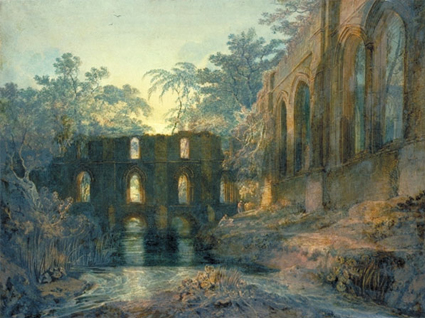In 1797, a young JMW Turner embarked on a tour of England's 'barren and frightful' North. A revelation early one morning at Norham Castle gave his life and art a new perspective. By Andrew Graham-Dixon
One hundred and ninety nine years ago the young JMW Turner set out on an eight-week, 1000-mile sketching tour of the North of England that irrevocably changed both his art and his life. This almost bicen-tenary has been marked by the publication of an absorbing book by David Hill, Turner in the North, and a Tate Gallery exhibition of the same title that, though modest in size, is both revealing and moving.
When he was an old man, Turner often harked back to the long, arduous journey he made back in the summer of 1797, up into that part of the country described by Daniel Defoe earlier in the 18th century as the wildest, most barren and frightful landscape in the British Isles. The 21-year- old artist and would-be Associate of the Royal Academy travelled up through Rotherham, Doncaster, Pontefract, Wakefield, Durham and North Shields until he reached Berwick-upon-Tweed; he then turned back, travelling through Jedburgh, Carlisle and the Lake District before slowly winding his way back to London via Lancaster, York, Beverley and Louth. It rained a lot and crops everywhere failed. But the landscape did not seem barren to Turner. In retrospect, he came to associate the places he visited that summer with the first maturing of his sensibility. He certainly seems to have talked about his journey in such terms to John Ruskin, who gave a greatly sentimentalised but perhaps not entirely fanciful account of its significance to Turner in Volume 5 of Modern Painters.
"And at last fortune wills that the lad's true life shall begin; and one summer's...


